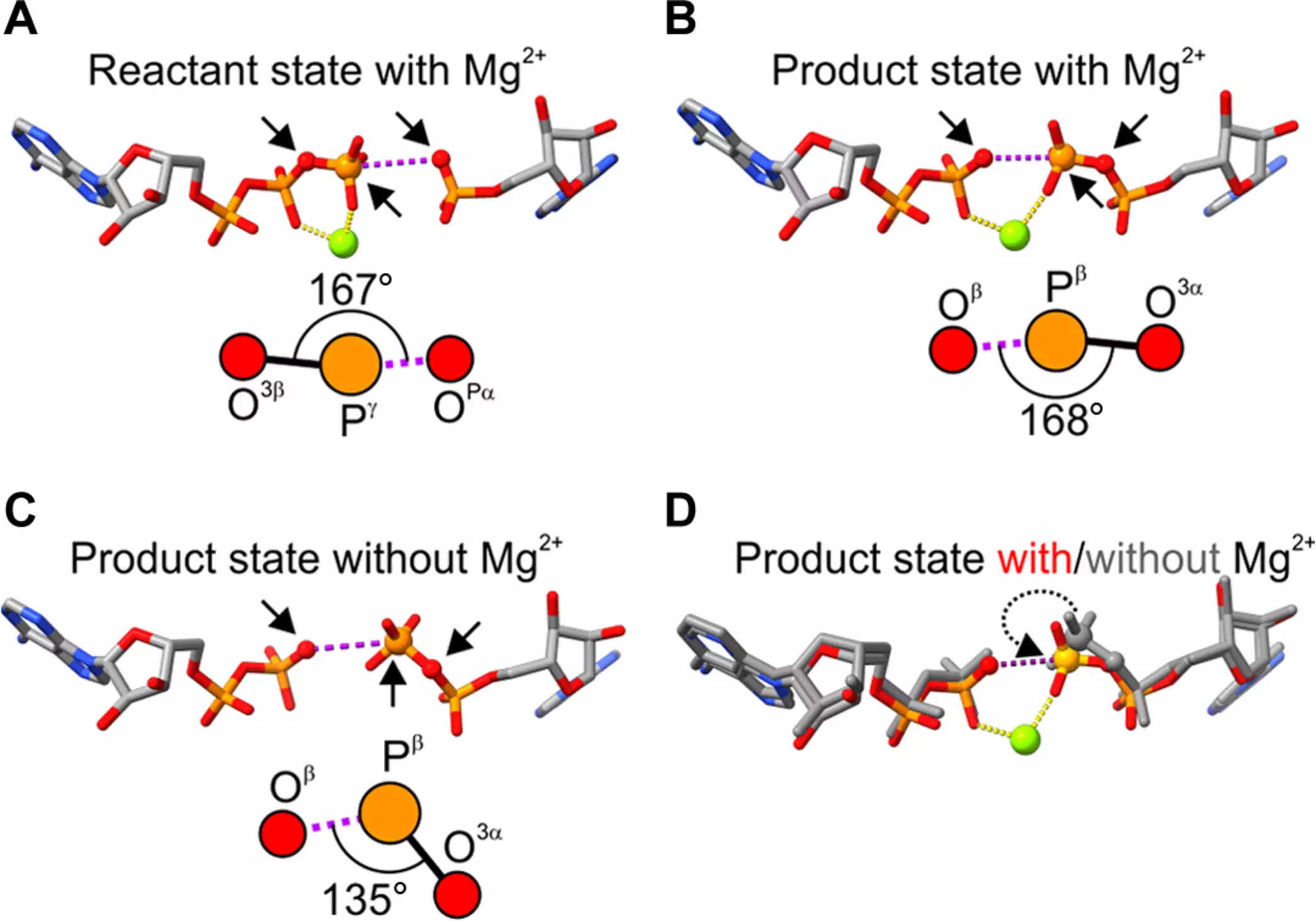Adenosine triphosphate (ATP) is often referred to as the energy currency of the cell; it plays a critical role in various biological processes that are essential for life. From muscle contraction to cellular signaling, ATP is involved in an array of functions that maintain cellular health and operation. Its production is of paramount importance, as cells depend on a continuous supply of this molecule to fuel metabolic activities. Researchers at Umeå University have made significant strides in understanding the complex chemistry involving ATP production, specifically focusing on the role of magnesium—a metal often underestimated in its contributions to biochemical processes.
The recent research led by Professor Magnus Wolf-Watz reveals that magnesium is not merely a supporting element but a crucial player in the enzymatic production of ATP. The research team highlighted adenylate kinase, an essential enzyme in ATP synthesis, which utilizes magnesium to facilitate the conversion of adenosine diphosphate (ADP) and adenosine monophosphate (AMP) into ATP. While magnesium’s role in electrostatic stabilization was previously acknowledged, the new findings uncover its more dynamic role in altering molecular configurations to enhance reaction rates.
The revelation that magnesium influences the precise geometry of the reactants within the enzyme’s active site is groundbreaking. Such specificity denotes that even minute adjustments can have significant impacts on catalytic efficiency. This opens new avenues of thought regarding the interplay between metal ions and biological molecules, suggesting that the presence and arrangement of metal atoms could fine-tune biochemical reactions.
The study’s methodology was two-fold, employing both experimental crystallography and computational chemistry to corroborate findings. Professor Elisabeth Sauer-Eriksson’s work in obtaining crystallographic data provided visible evidence of the angle adjustments made by magnesium during ATP formation. Complementing this, computational models from Professor Kwangho Nam’s lab at the University of Texas at Arlington demonstrated that the magnesium-induced angular shifts were not isolated changes but were indicative of broader structural transformations within the enzyme.
This synergy between experimental and computational approaches provides a holistic view of enzymatic functions, bridging an important gap in biochemical knowledge. By elucidating the intricate relationship between magnesium, enzyme structure, and ATP synthesis, the researchers have potentially unlocked new questions regarding the molecular mechanisms of catalysis, urging further investigation into how similar processes might function in other enzymes.
The implications of this research extend beyond academic curiosity. Understanding how magnesium enhances ATP production can inform various fields, including medicine, fitness, and biotechnology. For instance, medical researchers could explore therapeutic approaches that manipulate magnesium levels to improve ATP synthesis in conditions where cellular energy is compromised, such as in chronic fatigue syndromes or muscle disorders.
Moreover, the findings may contribute to our understanding of bacterial infections, as ATP plays a vital role in the energy management of pathogens. Targeting the ATP synthesis pathway influenced by magnesium could offer new therapeutic strategies against bacterial growth and resistance.
The collaborative research effort spearheaded by Professor Magnus Wolf-Watz at Umeå University illuminates the critical function of magnesium in ATP production. Through innovative experimental techniques and computational analyses, the research team has unveiled the fine-tuned mechanics of enzymatic reactions, emphasizing how slight changes in molecular geometry can dramatically affect catalytic performance. This groundbreaking work not only enhances our understanding of fundamental biological processes but also paves the way for future research aimed at leveraging these insights for practical applications in health and disease management. As we delve deeper into the complexities of cellular life, the significance of metal ions such as magnesium cannot be overstated—it serves as both a catalyst and a bridge to understanding the intricate dance of life at the molecular level.


Leave a Reply